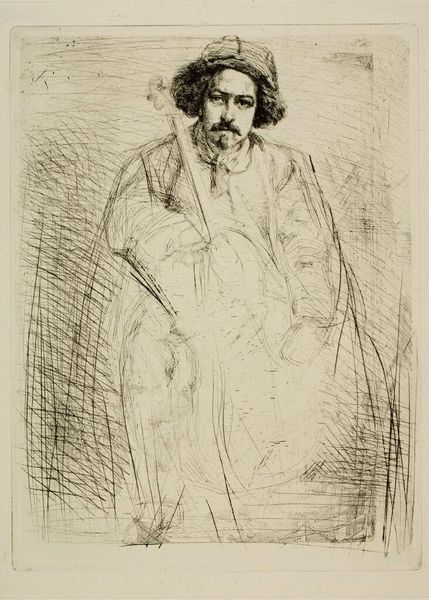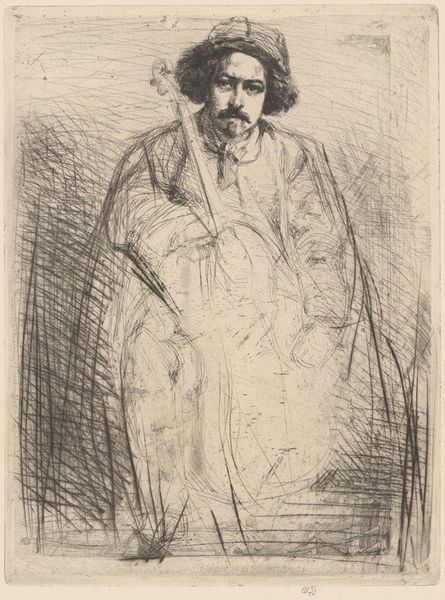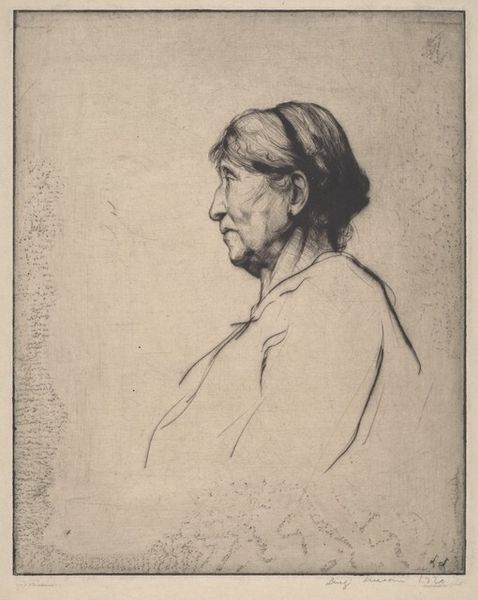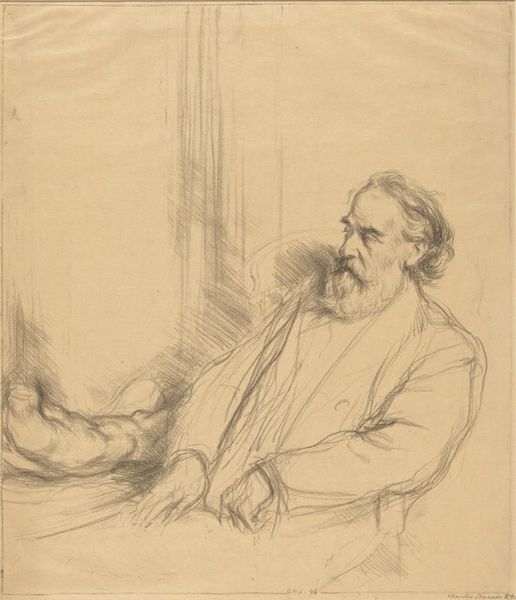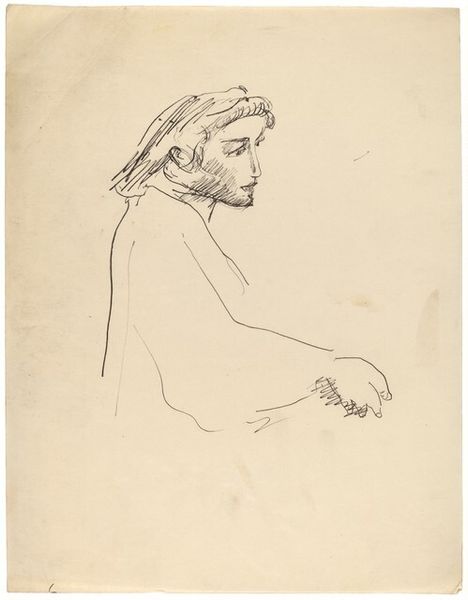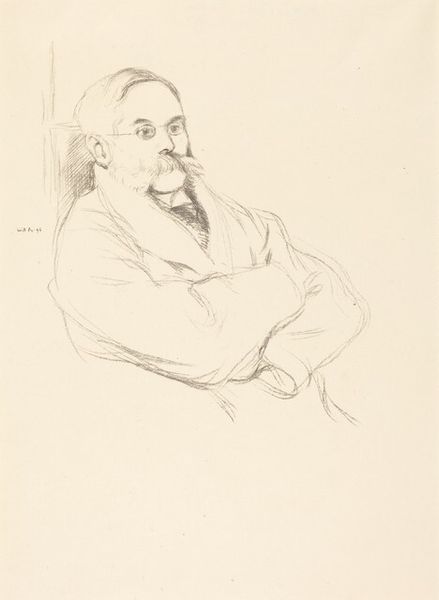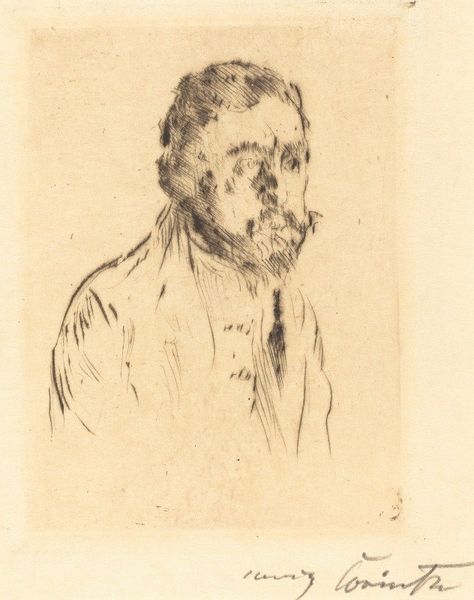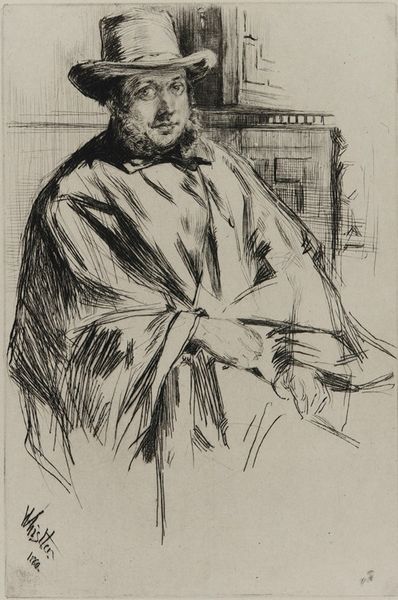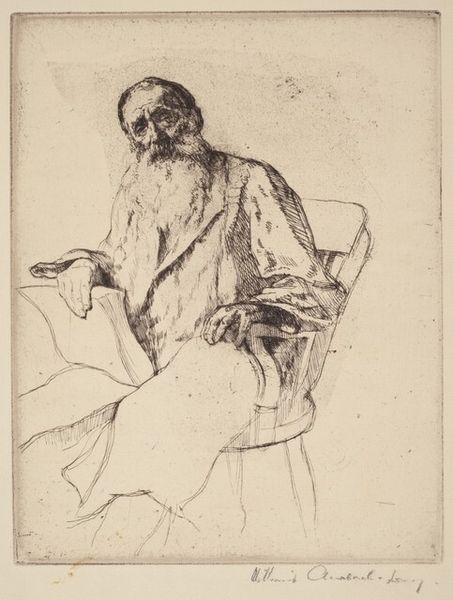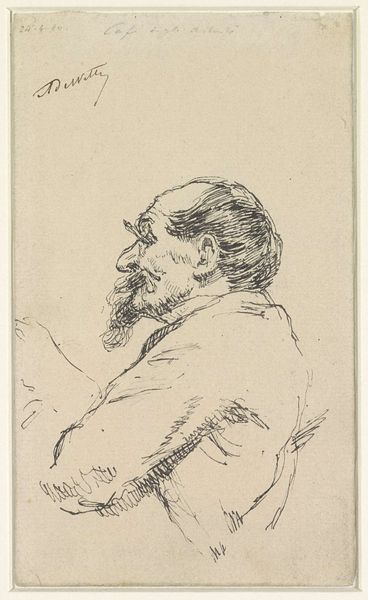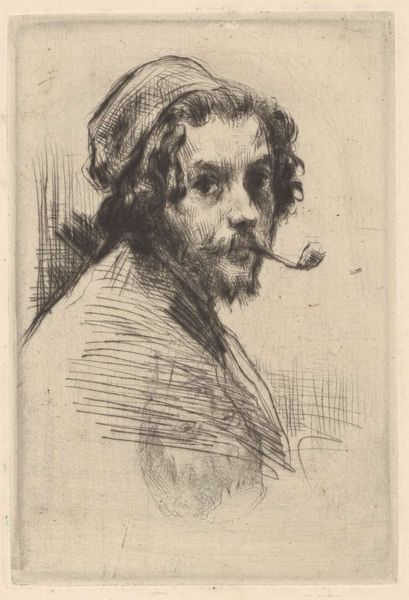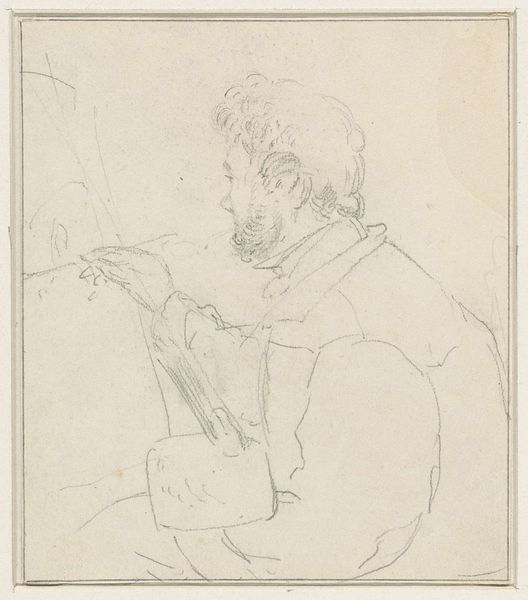
drawing, print, etching, graphite
#
portrait
#
drawing
# print
#
etching
#
graphite
#
portrait drawing
#
realism
Copyright: Public Domain: Artvee
Curator: Here we have James McNeill Whistler's etching, "Axenfeld," created around 1860. My initial impression is one of unfinished elegance; there's a haunting quality to the sitter's gaze, captured so economically with simple lines. What do you see, Editor? Editor: A potent rendering of masculinity. The composition, with the subject gazing slightly down, creates a power dynamic between him and the viewer, which aligns with the conventions and ideals of the era. But it's the subtle melancholy in the eyes that subverts the composition somewhat. Curator: Indeed, this mix of vulnerability and poise is masterfully conveyed. Notice how the minimal background framing is comprised of just a few etched lines? It focuses our attention on the sitter’s facial features, while simultaneously contributing to the sense of him being enclosed, almost trapped within the frame. Editor: This technique might also signify the restricted societal roles and expectations placed upon men at the time. This period witnesses significant debates about gender roles, especially masculinity, often emphasizing concepts of rationality, success, and a suppression of emotion. I am also very much reading here the legacy of class relations; the careful rendition of the clothing and the general composition both reflect a person of note from the middle or upper classes. Curator: Precisely, and that restricted state echoes in the iconography of portraits of that period. They're statements of societal positioning and assertions of the self within an established, immutable order. Whistler has masterfully manipulated the visual codes associated with traditional portraiture, to create something uniquely human and full of introspection. Editor: While that traditional symbolism informs my understanding of "Axenfeld", I am struck here by how such careful work has rendered, ultimately, a person staring back, vulnerable and aware. And perhaps through that, Whistler points towards future articulations of how society might free itself from outdated and repressive class strictures and social conventions. Curator: In conclusion, "Axenfeld" stands as a compelling reminder that an artist can transcend their time to deliver something both universal and deeply personal. Editor: A powerful moment of historical record—and resistance.
Comments
No comments
Be the first to comment and join the conversation on the ultimate creative platform.
